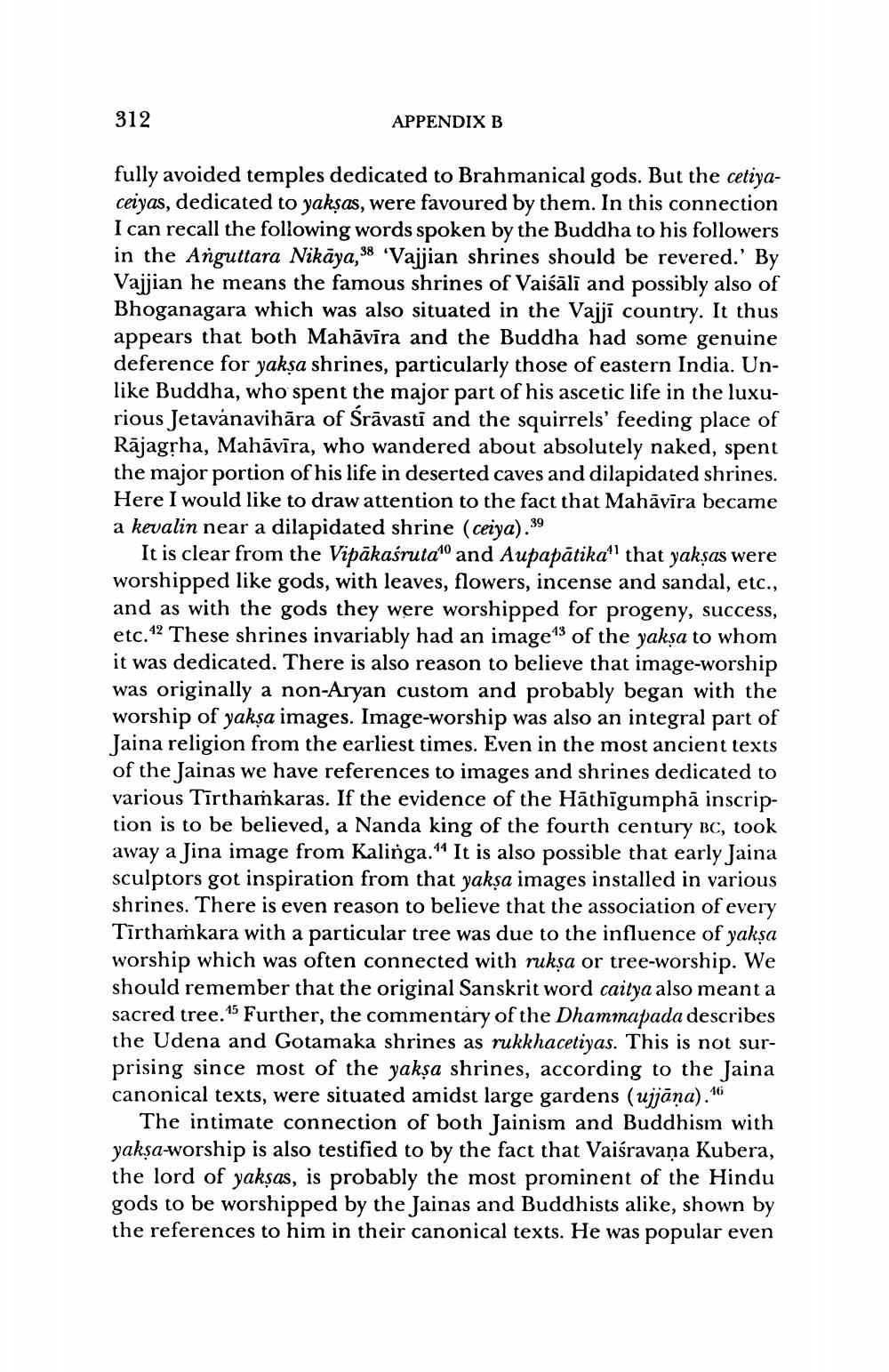________________
312
APPENDIX B
fully avoided temples dedicated to Brahmanical gods. But the cetiyaceiyas, dedicated to yakṣas, were favoured by them. In this connection I can recall the following words spoken by the Buddha to his followers in the Anguttara Nikaya,38 'Vajjian shrines should be revered.' By Vajjian he means the famous shrines of Vaiśālī and possibly also of Bhoganagara which was also situated in the Vajji country. It thus appears that both Mahāvīra and the Buddha had some genuine deference for yakṣa shrines, particularly those of eastern India. Unlike Buddha, who spent the major part of his ascetic life in the luxurious Jetavanavihāra of Śrāvastī and the squirrels' feeding place of Rājagṛha, Mahāvīra, who wandered about absolutely naked, spent the major portion of his life in deserted caves and dilapidated shrines. Here I would like to draw attention to the fact that Mahavira became a kevalin near a dilapidated shrine (ceiya).39
It is clear from the Vipakaśruta" and Aupapātika" that yakṣas were worshipped like gods, with leaves, flowers, incense and sandal, etc., and as with the gods they were worshipped for progeny, success, etc. 12 These shrines invariably had an image13 of the yakṣa to whom it was dedicated. There is also reason to believe that image-worship was originally a non-Aryan custom and probably began with the worship of yakṣa images. Image-worship was also an integral part of Jaina religion from the earliest times. Even in the most ancient texts of the Jainas we have references to images and shrines dedicated to various Tīrthamkaras. If the evidence of the Hathīgumpha inscription is to be believed, a Nanda king of the fourth century BC, took away a Jina image from Kalinga." It is also possible that early Jaina sculptors got inspiration from that yakṣa images installed in various shrines. There is even reason to believe that the association of every Tīrthamkara with a particular tree was due to the influence of yakṣa worship which was often connected with ruksa or tree-worship. We should remember that the original Sanskrit word caitya also meant a sacred tree.15 Further, the commentary of the Dhammapada describes the Udena and Gotamaka shrines as rukkhacetiyas. This is not surprising since most of the yakṣa shrines, according to the Jaina canonical texts, were situated amidst large gardens (ujjāna).16
The intimate connection of both Jainism and Buddhism with yakṣa-worship is also testified to by the fact that Vaiśravaṇa Kubera, the lord of yakṣas, is probably the most prominent of the Hindu gods to be worshipped by the Jainas and Buddhists alike, shown by the references to him in their canonical texts. He was popular even




